Southwest Airlines disrupted Hawaii’s interisland market by introducing affordable fares and competition, but delays and operational challenges continue to frustrate travelers. With the Department of Transportation filing a lawsuit against the airline for chronic delays, questions arise about its ability to effectively serve some of Hawaii’s unique travel needs with its current methodology.
The Department of Transportation alleges that Southwest Airlines illegally operated flights with chronic delays, disrupting passengers’ travel plans. The agency stated it is pursuing “maximum civil penalties.”
“Airlines have a legal obligation to ensure that their flight schedules provide travelers with realistic departure and arrival times,” Transportation Secretary Pete Buttigieg said. “Today’s action sends a message to all airlines that the Department is prepared to go to court in order to enforce passenger protections.”
Mainland delays create interisland disruption.
Southwest’s operational model relies on Boeing MAX 8 planes serving mainland and interisland routes. Without a dedicated interisland fleet, delays from mainland flights ripple across Hawaii. Travelers in Honolulu recently faced hours-long delays to Maui and Kona due to late-arriving planes from the mainland.
The short and rapid-fire nature of interisland flights—some lasting just 20 minutes—requires precise scheduling. Southwest’s reliance on larger planes not specifically designed for these routes adds to the logistical challenges. For Hawaii residents and visitors, these delays create a strain on work, family commitments, and vacation plans.
One traveler observed, “Interisland flights with Southwest are always delayed because they depend on mainland schedules. They don’t treat Hawaii as a unique market.”
Hawaiian Airlines’ approach offers stability.
Hawaiian Airlines operates a fleet of nearly 25-year-old Boeing 717s dedicated specifically to interisland travel. While these planes are aging and have their own issues, including tight seating and limited overhead space, they allow Hawaiian to maintain a far more consistent schedule.
Travelers frequently note the airline’s ability to avoid the cascading delays that often disrupt Southwest flights. As one frequent flyer shared, “Hawaiian’s planes might be older, but their schedules are reliable. I won’t risk Southwest when timing matters.”
Legal action amplifies operational concerns.
This latest DOT lawsuit against Southwest highlights ongoing delays and missed commitments. For Hawaii, these problems feel particularly acute given the state’s dependence on reliable interisland service. The lawsuit puts further pressure on Southwest to address its operational shortcomings, but the airline’s reliance on mainland-based planes may complicate potential solutions.
Suggestions for improvement often include stationing aircraft locally to reduce disruptions. However, Southwest’s business model, which prioritizes cost-efficiency and a long-range focused fleet, makes such changes unlikely without significant external pressure and internal change.
What travelers should expect.
As Southwest navigates this latest legal challenge and related operational scrutiny, Hawaiian Airlines remains the preferred choice for many interisland travelers. While Hawaiian’s fleet modernization plans remain uncertain, its decades-long localized operations provide reliability that Southwest has yet to replicate.
Have recent delays affected your travel plans in Hawaii? Share your experiences below.
Get Breaking Hawaii Travel News
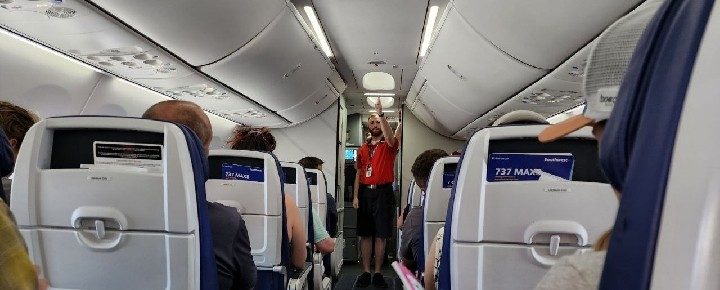
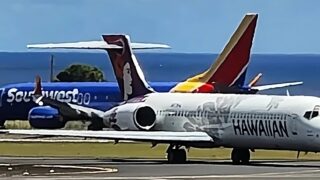
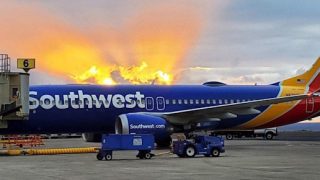
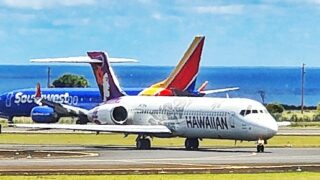
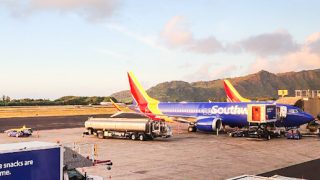


The flights in question were operated two years ago between Chicago and Oakland, and Baltimore and Cleveland. The Department of Transportation have been going after other airlines with chronically late flights (Jet Blue was recently levied a fine for the same reason) Every airline has flights that are considered chronically late, I’m sure more fines are to come. The writer makes sound as if the lawsuit is specific to inter-island, Southwest flights. Simply not true.
There’s an easy fix to this. Local passengers need to quit flying Southwest for inter-island flights unless the flights originate locally.
Please clarify. Is this the incompetent Washington DC (federal) DOT or the totally inept Hawaii DOT? These delays couldn’t possibly be partially due to perpetual runaway shutdowns at HNL and KOA could they? All Hawaii needs is more difficulty for airlines doing business here. Either way, the traveling public will pay with reduced competition (higher prices) because our bureaucrats are more concerned with photo op’s and pensions than doing their jobs!
And as mentioned previously, HA cancelled my daughters Christmas eve flight LAX to HNL with no explanation or re-booking! Probably due to FAA hours of duty regulations, but who knows for sure! HA suffers from the same problems on the mainland that SWA does here. Rest assured, Southwest wants their planes to fly safely and on time!
Just wondering if Southwest has thought about a crew domicile in the islands? A few senior pilots and flight attendants in the islands along with some longer turn times in the mainland schedules might work wonders!
Sounds like “I’m from Washington and I’m here to help”. The only solution to SWA’s issue is for SWA to station spare A/C and crews in the islands. If they are forced to do that, they won’t be needed because ticket prices will have to substantially increase and passengers will stop flying SWA inter-island. Overloading HI/AK. In a week, DOT will be lead by another person – so there’s hope.